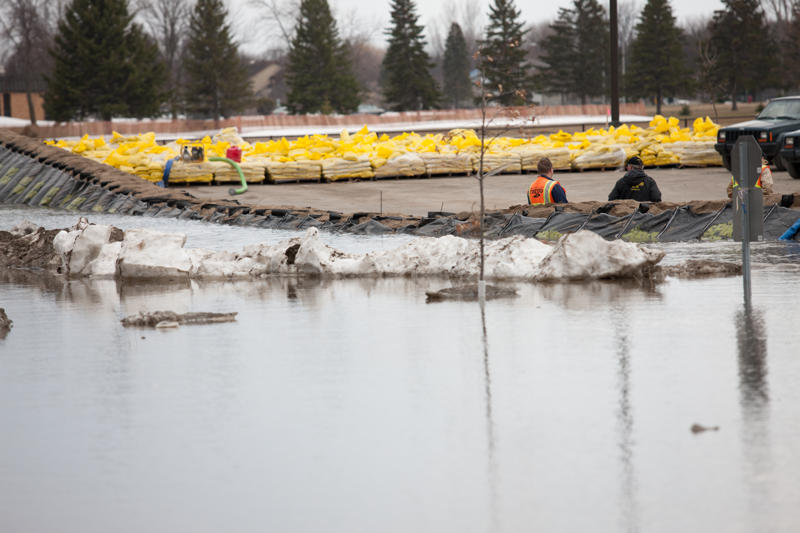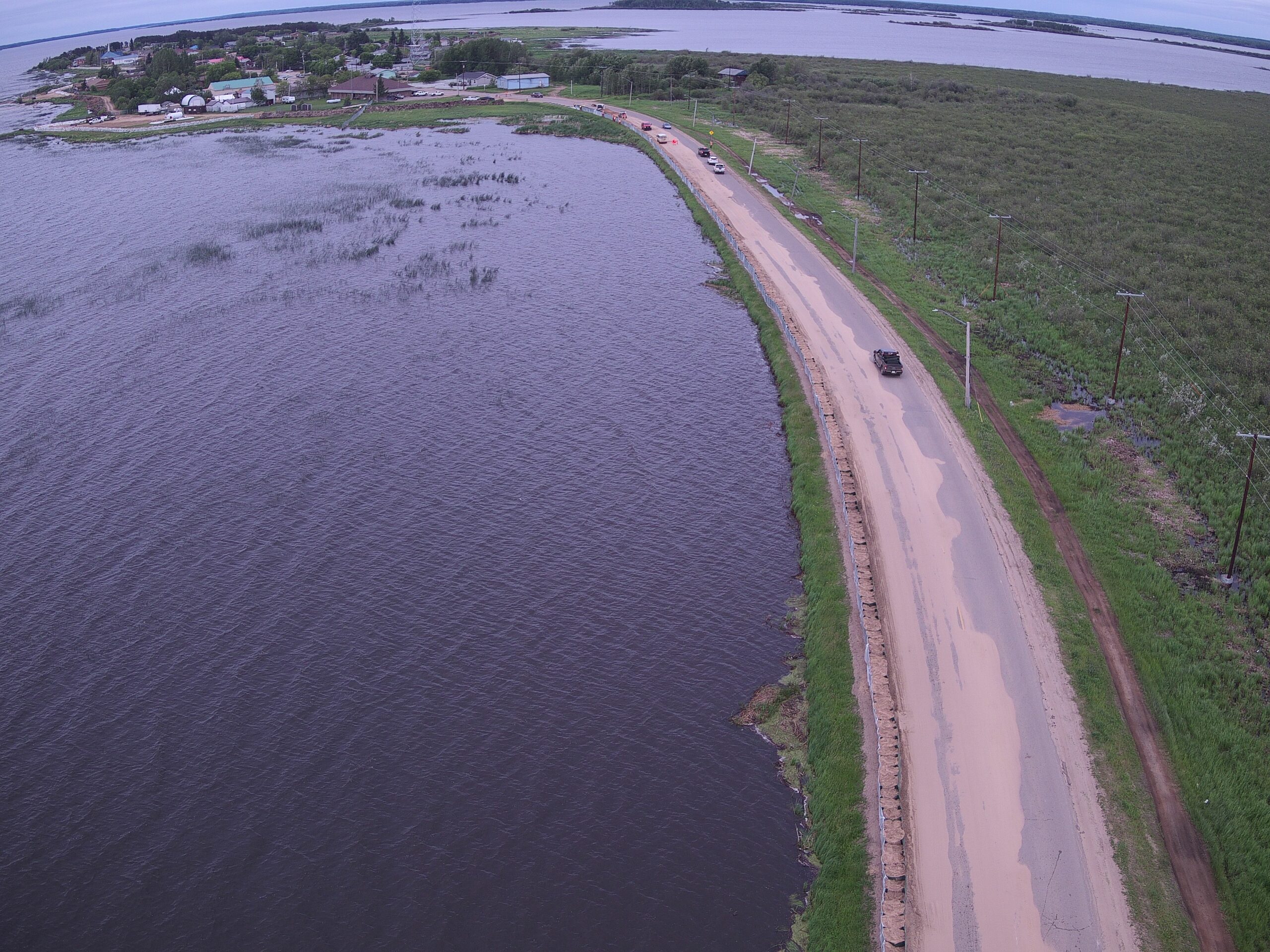Flooding has always been a part of life in the Midwest, but climate change and human development is making it happen more often. In turn, floods can cost billions of dollars in damage to cities, farmland, and critical infrastructure like highways and railroads.
Because of this increase in flooding, it’s essential for local and state government agencies and emergency management organizations to know the causes and possible solutions for preventing catastrophic flood damage in cities and towns throughout the Midwest, provided below.
Why Is the Midwest Flooding?
Every flood has a different cause. Common factors include human intervention through the installation of buildings below the waterline. However, here are some additional causes that are common in the Midwest.
- Snowmelt: As snow and ice melt, they frequently push rivers past flood stage downstream.
-
- Ice jams: These are especially common in winter and early spring, when rivers and lakes are still icy. Ice jams occur when broken ice piles up against a bridge or other obstacle in the river, blocking the water flow until the river breaches its banks.
- Lack of green spaces: Larger cities along lakes or rivers, such as Chicago, Minneapolis, or Milwaukee, may not have enough open green spaces to absorb flood water quickly.
- Droughts followed by extreme rainfall: Dry spells compact the soil, making it harder for fields and prairies to absorb rainwater properly.
- Levee or dam breaches: This is most common with temporary levees, like in Davenport, Iowa, in 2019. However, permanent levees and dams can fail when they fall into disrepair, causing major flood damage.
- Flash flooding: As with hurricanes in coastal areas, low-lying areas, such as ditches or river valleys, are at risk of flash flooding during periods of heavy rain.
Midwest Flooding & Climate Change
While the Midwest has always been somewhat prone to flooding, climate change is making these happen more often—and with more damage.
Part of the cause can be attributed to increases in rainfall with rising temperatures, especially outside normal seasonal boundaries, combined with extreme drought conditions that make the soil less absorbent of rainwater. Paired together, it leads to a dangerous combination of flood conditions that causes soil erosion, property damage, and crop loss that contributes to food shortages worldwide.
Midwest Flooding Today
Midwesterners are at least somewhat used to the threat of flooding, especially around the Mississippi River Basin. However, traditional strategies for flood prevention aren’t working as well as they once did, since these events are happening more frequently and with greater severity.
Every year, flooding damages crops and leads to farmers having lower yields. It also damages homes and infrastructure and can be fatal if someone tries to drive over flood-damaged roadways or handles water-damaged electrical equipment.
Each major flood that occurred in 2022 cost an average of $4.6 billion in damage per event, according to National Centers for Environmental Information. Thus far, 2023 is also on track to have several events with similar costs in damages.
Flood Control Strategies for Flooding in the Midwest
Protect Your Land with Levees
Levees are a type of embankment that can protect properties and streets from flooding. They are a common sight along the Mississippi River and its tributaries, but city organizations, homeowners, and farmers can use them to protect what matters most from flood damage.
TrapBag® makes it easier than ever to set up a temporary levee embankment. Its pentagon-shaped cells are easy to fill and require 40% less material than traditional sandbags. Even more, it can prevent instances like the 2019 Davenport levee breach from happening by preventing a total structural collapse—if one of the cells in the TrapBag barrier is compromised somehow, the rest of the barrier will still hold.
Build Dams
Low-lying areas in the Midwest are prone to both flooding and ponding, which can devastate corn, soybeans, and other crops.
Luckily, TrapBag can be set up to protect fields along creeks and small rivers. Since the cells in an individual barrier system can be stacked on top of each other, a TrapBag dam can prevent several feet of water from spilling over onto roads, fields, and properties until the flooding has subsided.
Regulate Water Levels with Dikes/Berms
Irrigation ditches are a common sight throughout the Midwest, but they are at as much risk for flooding as any river or creek due to their shape. However, temporary dikes—also called berms—can mitigate flooding in these ditches and other low-lying areas.
In addition to keeping water from getting where it doesn’t belong altogether, TrapBag barriers also make great berms for regulating water levels in irrigation ditches and other low-lying areas near subdivisions, commercial land, or surrounding fields. This will keep the water from flowing out of control, making it easier to mitigate flood damage.
Invest in Erosion Control
In addition to being a threat to property owners in general, soil erosion is a frequent issue for farmers in the Midwest that flooding only exacerbates.
However, TrapBag can also be used to prevent erosion on lakeshores and riverbanks by adding barriers along embankments to strengthen them during periods of heavy rainfall.
Prioritize Stormwater Containment
Stormwater containment measures are essential for Midwestern communities living along large lakes and rivers, as it prevents water polluted with leaves and debris from reaching local wildlife. Stormwater that breaches local waterways can kill local fish and algae populations, impacting the entire food chain.
However, TrapBag is just as good at keeping water in as it is at keeping water out. Stormwater detention basins and ponds can be reinforced with TrapBag by encircling the area with its watertight barrier, making it less likely that stormwater will overflow into streams.
Stabilize Dunes Along the Great Lakes
The sand dunes along the Great Lakes are a stunning natural feature and a hallmark of any summer weekend trip to the lakeshore. However, flooding, erosion, and land development have put these barriers at risk of disappearing.
Luckily, state and municipal governments have begun using TrapBag to protect and stabilize dunes. Much like how TrapBag barriers retain or repel water, they can also be installed at the core of a sand dune to protect the base, even in severe storms and high winds.
Aside from preserving the scenic beauty of the Great Lakes, this dune stabilization measure also protects lakefront structures from rising water levels.
How TrapBag Mitigates & Prevents Midwest Flooding
TrapBags are an ideal solution for preventing flooding and erosion. Unlike traditional sandbags or other erosion control equipment, they require fewer filler materials during setup. They are also easy for one individual to set up quickly, long before the river surpasses flood stage.
Protect the Midwest with TrapBag

Floods are a fact of life in the Midwest, but they don’t have to be devastating. TrapBag is a quick, affordable solution that can prevent hundreds of thousands of dollars in damage to crops, buildings, and city infrastructure.
To learn more about how TrapBag can prevent the worst-case scenario during a flood, view our products and contact our team about your order today.
Learn More About Historic Midwest Floods
1993 Midwest Flood
The 1993 flood season in the Midwest was a catastrophic even that impacted the Mississippi and Missouri Rivers. What made this event memorable was both the six-month duration of the flood season and the amount of states that reported damage from the flood.
From North Dakota to Missouri and Kansas to Illinois, nine states were affected with a total of $15 billion in damages and 50 recorded deaths.
As with most of the floods on this list, while most of the causes of the flooding were beyond human control—including frequent, heavy rains in the spring—hundreds of levees broke during the flood. Proper protection and maintenance of flood control solutions could make a difference in ensuring history doesn’t repeat itself, including possible reinforcement of existing levees with TrapBag barriers.
2007 Midwest Flooding
In August 2007, a persistent, weeklong storm plagued communities along the Mississippi, Fox, Blanchard, and Rock Rivers, including downstream flooding from runoff after the region received up to 17 inches of rain in some areas.
This flood destroyed hundreds of acres of farmland and city infrastructure, totaling hundreds of millions of dollars in damages from Minnesota to Ohio.
June 2008 Midwest Floods
Not even a full year after the historic 2007 flood, the upper Midwest was inundated once again in June 2008. Over 30 river gauges across Illinois, Iowa, and Wisconsin reported major flooding.
In turn, entire towns along the Mississippi were evacuated, and dozens of counties in Illinois, Indiana, and Wisconsin were declared disaster areas.
2019 Midwest Floods
The Mississippi and its tributaries flooded after a particularly wet spring in 2019, causing levee breaches from St. Paul to St. Louis. Practically the entire Midwest was impacted by this flood, which occurred after a gradual buildup and saturation of the soil while rivers were already past their capacity.
Midwest Flooding 2022
One of the more recent flooding incidents of the 2020s occurred primarily in Kentucky between late July and late August. Due in part to the hilly geography of Kentucky and a dry spell that preceded the flood, there was immense devastation throughout the region with hundreds of people displaced.


